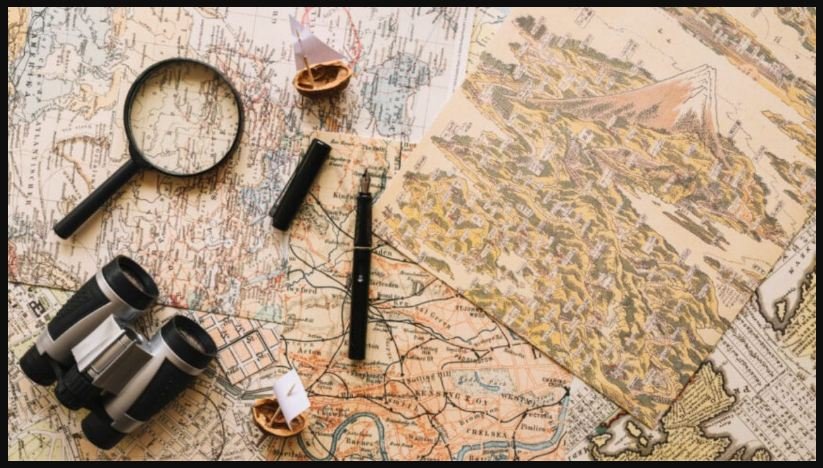Introduction to LRTSjerk
Imagine a world where commuting is no longer a daily headache but an efficient and enjoyable experience. This vision isn’t just a dream; it’s what LRTSjerk aims to achieve.
As urban areas continue to grow, so does the strain on our public transportation systems. Commuters are increasingly frustrated by delays, overcrowding, and outdated infrastructure. But what if there was a progressive idea that could turn this around?
Enter LRTSjerk—a bold approach designed to improve public transport and create smarter cities for everyone.
Let’s dive into how this innovative concept can transform your daily commute and elevate our environment.
The Current State of Public Transportation
Public transportation faces a myriad of challenges today. Many systems must be updated, and we need help to keep pace with growing urban populations. Delays and overcrowding have become the norm for daily commuters.
In many cities, public transit options are limited or inconvenient. Routes often need to don’t connect better, making travel time lengthy and frustrating. This leads more people to rely on personal vehicles, contributing to traffic congestion.
Maintenance issues plague aging infrastructures as budgets tighten. Funding cuts exacerbate these problems, leaving agencies scrambling to provide adequate services.
Environmental concerns also loom large. Reliance on fossil fuels continues to negatively impact air quality, while sustainable alternatives remain underutilized.
As cities expand and evolve, so must their transportation networks. In this rapidly changing landscape, the urgency for innovative solutions has never been clearer.
How LRTSjerk Will Improve Public Transportation
LRTSjerk is designed to revolutionize how we think about public transportation. Integrating technology with user-friendly interfaces promises a seamless experience for riders.
Imagine real-time updates on bus and train schedules right at your fingertips. You are no longer waiting in uncertainty or missing connections due to outdated information.
The system prioritizes accessibility, ensuring that everyone can navigate public transport easily. This includes features like audio descriptions for the visually impaired and priority seating arrangements.
Additionally, LRTSjerk emphasizes eco-friendliness by promoting electric vehicles within its fleet. Fewer emissions mean cleaner air for our communities.
LRTSjerk is a promising solution to modern transit issues that cities face today. By enhancing efficiency, reducing wait times, and focusing on sustainability, LRTSjerk will ensure that riders arrive faster and enjoy a more pleasant journey overall.
Benefits of LRTSjerk for Commuters and the Environment
LRTSjerk offers a fresh approach to public transportation, making it more appealing for commuters. With its streamlined design and efficient routes, travel times will decrease significantly. This means less time in traffic and more time for what truly matters.
For the environment, LRTSjerk is a breath of fresh air—literally. Promoting the use of electric vehicles and eco-friendly infrastructure can drastically reduce carbon emissions. Fewer cars on the road lead to cleaner air quality.
Additionally, this system encourages community engagement and interaction among riders. It fosters a sense of belonging as people share their daily journeys. A connected community benefits everyone.
Moreover, integrated bike lanes within LRTSjerk’s framework promote healthier lifestyles. Commuters can easily transition between biking and public transport without hassle or delays. Embracing these shifts leads to lasting positive impacts on urban living spaces.
Implementation and Potential Challenges
Implementing LRTSjerk presents both exciting possibilities and significant challenges.
First, funding is a major hurdle. Securing investment from the public and private sectors can be complex, and the initial costs might deter some stakeholders.
Next comes infrastructure adaptation. Existing systems may require upgrades or complete overhauls to integrate LRTSjerk effectively, which could temporarily disrupt commuters.
Regulatory hurdles also pose obstacles. Navigating local government policies and regulations necessitates careful planning and negotiation.
Public acceptance is another crucial factor. Gaining community support involves educating citizens about the benefits of this progressive approach while addressing their concerns.
Technology integration plays a vital role in success. Ensuring seamless connectivity with current transportation networks requires advanced planning and execution to avoid operational hiccups.
Comparison to Other Progressive Transportation Ideas
LRTSjerk stands out from other progressive transportation concepts like electric buses or bike-sharing programs. While these options offer benefits, they often need a more holistic approach LRTSjerk provides.
For instance, traditional bus systems can become overcrowded and unreliable, and riders may find themselves waiting longer than expected. In contrast, LRTSjerk emphasizes efficiency and integration with existing networks.
Another notable difference is sustainability. Many innovative transport solutions focus solely on emission reductions but overlook social equity. LRTSjerk aims to balance environmental impact and accessibility for all communities.
Examining urban air mobility initiatives shows another layer of complexity in the transportation debate. They promise speed but raise questions about noise pollution and infrastructure costs that could limit their feasibility in densely populated areas.
Thus, while alternatives exist, they need to encapsulate the comprehensive vision that addresses immediate commuter needs and long-term environmental goals as effectively as LRTSjerk does.
Conclusion
Public transportation is at a crossroads. The challenges we face today, from congestion to environmental concerns, call for innovative solutions like LRTSjerk. This progressive idea promises to improve the efficiency of public transport and emphasize sustainability and community engagement.
LRTSjerk stands out by integrating technology with user needs, ensuring that commuters can access seamless transit options. As cities grow and evolve, so too must our approaches to transportation.
The benefits extend beyond convenience; they include reduced carbon footprints and enhanced urban livability. While hurdles may exist during implementation—such as funding or infrastructure adjustments—the potential rewards far outweigh the challenges.
As society seeks better alternatives for commuting, ideas like LRTSjerk pave the way toward a more connected future. Embracing such innovations could redefine how we think about travel within our communities. With careful planning and stakeholder collaboration, there’s great hope for progress.
